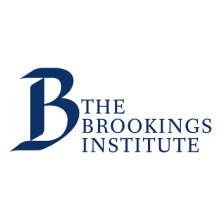It’s good news that financial regulators are focused on figuring out what to do about stablecoins because their growth is creating significant risks. But there’s a bigger picture here than how to bring these new instruments within the regulatory perimeter, or how to regulate crypto generally, even though these are important. The bigger issue is how do we modernize our payments system? This should be a Biden administration priority because it would help low-income people in particular.
Timothy G. Massad
Senior Fellow – The John F. Kennedy School of Government, Harvard University
Former Chairman – Commodity Futures Trading Commission
Former Assistant Secretary – Treasury for Financial Stability
The connection between stablecoins and helping low-income people might seem unlikely because stablecoins are primarily used today to speculate on cryptocurrencies. While their growth has led financial regulators to worry about potential systemic risks, that growth is partly because of deficiencies in our payments system, and those deficiencies are a major reason why the U.S. lags behind other developed nations in financial inclusion. Stablecoins have potentially much broader application. Properly regulated, they are one means—although clearly not the only means—of curing some of those payment system deficiencies. Thus, financial regulators should not only address the risks that stablecoins pose but keep their aim on that broader goal of modernizing our payments system and improving access to the financial system.
This paper discusses (1) why stablecoins are a problem; (2) how we should regulate stablecoins; and (3) the bigger picture about modernizing payments and improving financial access.
The risks of stablecoins
Stablecoins are digital tokens whose value is pegged to the dollar (or another currency or asset). They serve to grease the wheels of the crypto industry, enabling investors to easily transfer value between different crypto exchanges and cryptocurrencies without converting back and forth into dollars. Settlement is instant, thus avoiding delays of other means of payment. This function coupled with explosive growth in the crypto currency market explains why the market capitalization of stablecoins has increased from $20 billion twelve months ago to over $120 billion today1.
Figure 1: Market capitalization of stablecoins, January 2017 to August 2021
Stablecoins are currently not regulated in any meaningful way. While some issuers have state licenses, these impose minimal requirements. There are no standards requiring issuers to protect reserves or maintain liquidity. I have written about how a sudden spike in demand for repayment could cause a stablecoin to “break the buck” the same way the Reserve Primary Fund did in September of 2008, which triggered a run on money market mutual funds that was only stopped when the Treasury issued a guarantee of money market mutual fund liabilities.
Related Content
Regulating cryptocurrencies and future technologies: A conversation with Manuel P. Alvarez
Although stablecoins are currently not used widely outside of the crypto industry, they have the potential for much broader application. Stablecoins first garnered wide attention in June 2019 when Facebook proposed creating “a simple global currency”2 or stablecoin called Libra that would be pegged to a basket of fiat currencies including the dollar and the euro. That proposal provoked harsh criticism, both because of its sponsor3 as well as its design. Central bankers feared it would undermine sovereign currencies and monetary policies4. The proposal has since been renamed Diem and redesigned as a set of stablecoins, each tied to an individual fiat currency. It is not operational, in part, because Facebook promised in Congressional hearings that it would not launch the idea unless regulators approved, and they have not done so. Other stablecoin issuers did not ask for permission, and their tokens have grown enormously, which has finally prompted regulators to consider acting.
How to regulate stablecoins
In July, Treasury Secretary Yellen convened the President’s Working Group on Financial Markets (PWG) to discuss stablecoins. The PWG does not have any power to actually do anything about stablecoins, however. Instead, Treasury staff will soon issue a report that will recommend a path forward, which could include a mix of recommendations for actions by different regulatory agencies and potentially Congress.
The best option is to have the Financial Stability Oversight Council (FSOC) commence a review. Under Title VIII of the Dodd Frank Wall Street Reform and Consumer Protection Act, the FSOC can require regulation of a “payment activity” that it determines “is, or is likely to become, systemically important.”5 The FSOC has broad powers to get information from institutions engaged in an activity that it has reasonable cause to believe meets the standard for such a designation. That type of inquiry is much needed given the lack of transparency about stablecoins.
The law sets forth criteria for making the systemically important designation, which include size as well as the effect that the failure or disruption of the activity would have on critical markets, financial institutions, or the broader financial system. Under Title VIII, the FSOC has designated two operators of business payment systems as systemically important financial market utilities, but it has never designated an activity generally nor an entity engaged primarily in retail payments. The “likely to become” phrase is not in Title I, under which FSOC designated four entities following the global financial crisis. It is clearly relevant to the concern that, unless regulated, stablecoins could continue to grow dramatically.
Having been a member of the FSOC for three years, I believe an FSOC review will be useful even if it decides against a systemically important designation. The FSOC can still be the forum for making a sound choice among the alternative paths, which involve different regulators who comprise the FSOC. There is a good argument that stablecoins could be regulated as bank deposits under existing law. Section 21 of Glass Steagall (which survived despite repeal of much of that law) prohibits anyone from receiving a bank deposit unless subject to regulatory oversight under specific exceptions.
There is also the option of regulating stablecoins as securities or as money market funds. Securities and Exchange Commission chair Gary Gensler has suggested he might move to do so and has referred to the PWG report as something that his staff is working on with Secretary Yellen. Although I have compared stablecoin risks to those of money market funds, I do not think that is the best way to regulate them. They are fundamentally payment devices and not investments. Classifying them as securities would also appear to pre-empt a systemic importance determination as part of the payment authority given by Dodd Frank since the definition of “payment, settlement and clearing activity” for purposes of FSOC’s jurisdiction excludes “any offer or sale of a security under the Securities Act.” The PWG report will presumably indicate which path of this fork the Biden administration will pursue.
Another option is to recommend to Congress that it enact new authority. Various bills have been introduced to address stablecoins, including one that would limit issuance to entities that are banks. But at a time when the Biden administration and Congress already have many weighty legislative priorities, rapid enactment of legislation seems doubtful.
If the FSOC does reach a determination of systemic importance, the Federal Reserve would be charged with developing “risk management standards” that “promote robust risk management; promote safety and soundness; reduce systemic risks; and support the stability of the broader financial system.”6
The path chosen may affect the comprehensiveness of the regulatory framework that can be created, though we should put in place what we can now and add to it later if necessary. Ideally, we need a framework that includes not just traditional prudential regulation standards, but also operational risk measures, consumer protection standards, and standards to achieve interoperability. Regulators should require that reserves are invested in bank deposits, Treasuries, or other safe, liquid assets, and that there are liquidity requirements. If the Federal Reserve were to broaden who is eligible for a master account, then stablecoin providers which are not banks could park reserves at the Fed, an option some would argue is even safer because it would avoid the operational risk of a particular bank. Regulators should require a capital buffer even if reserves are invested in cash or other safe assets. That is because capital can protect against other types of losses, such as operational ones. Regulators may also want to ban the payment of interest to discourage users from maintaining large deposits. That plus requiring reserves to be invested in cash or other safe assets would likely mean that stablecoins would be attractive only as payment instruments, not as investments. A prohibition on interest would put stablecoins at a disadvantage relative to bank deposits if interest rates rise, but regulators might desire that in these early days of the industry. Compliance with “know your customer,” anti-money laundering, and other laws combatting the financing of terrorism is crucial.
There should also be operational resilience standards. This is a huge area of risk often overlooked in commentary that focuses on stablecoin financial risks. Stablecoins run on decentralized blockchains and smart contracts. The software for the various layers of operation could have flaws or could be vulnerable to attack. The largest stablecoins run on multiple blockchains but are separate and distinct tokens on each such blockchain, as a recent post by Neha Narula of MIT explains. That means risks associated with the integrity and reliability of the blockchains and software are multiplied. In addition, a stablecoin could become too large in relation to the capacity of the blockchain itself. Federal Reserve staff are presumably becoming knowledgeable about these issues through their collaboration with MIT to design a hypothetical central bank digital currency platform.
The regulatory framework should also include requirements for adequate disclosure of information to customers, rights of recourse, and standards on protection of customer information, including on how a customer’s data can be used. The Consumer Financial Protection Bureau may have a role to play in this regard. Finally, we may want to create standards that ensure interoperability between different stablecoins to avoid a fragmented system.
One other advantage of an FSOC process is that the presence of representatives of state banking and securities regulators on the council may help figure out how state regulation of stablecoins—which exists, but is quite limited—should mesh with federal standards.
Both the PWG and the FSOC are well suited to examining risks generated by financial markets. The PWG was created in response to the 1987 stock market crash; the FSOC was created in response to the 2008 global financial crisis. But whatever path is chosen for going forward, the goal should be not just to regulate risks of this particular innovation but to address deficiencies in the payment system that are a principal reason for the growth of stablecoins.
How regulating stablecoins can advance financial inclusion
While stablecoin usage has largely been in the crypto industry, their impact has already been broader. As Federal Reserve chairman Powell said in discussing Facebook’s Libra proposal, the concept “lit a fire” under central bankers to consider central bank digital currencies (CBDCs). Both stablecoins and CBDCs are ways to remedy deficiencies of our payments system and potentially enhance financial inclusion. As financial regulators address the risks of stablecoins, they should articulate that larger goal of modernizing our payments system and increasing access to the financial system.
Banks handle the vast majority of U.S. dollar payments in a safe and well-tested manner. But the system is characterized by relatively high cost, weak competition, and insufficient innovation. Americans pay significantly more than Europeans for payment services, particularly because of high fees paid for credit cards. The system is also slow relative to real-time payments increasingly common in other countries.
Most Americans might say the system is fine. We don’t notice interchange fees paid by merchants because they are rolled into prices, and our credit cards give us free revolving credit, cash back, frequent flyer miles, or other rewards. Nor is anyone who has some savings likely to be inconvenienced if a check takes a couple days to clear.
But the flaws of the system weigh much more heavily on those in lower-income brackets. Those who live paycheck to paycheck are at risk of incurring significant overdraft fees when checks don’t clear quickly. The fact that approximately 70%7 of those who use check cashing services have bank accounts is clear evidence that something is wrong with the payments system. In addition, because people with lower incomes have fewer credit cards—they use more prepaid cards and debit cards, which don’t offer the same benefits—the credit card costs embedded in prices fall disproportionately on them.
It is shocking that with a financial system as sophisticated as ours, 25% of American households are unbanked or “underbanked,” according to the FDIC. The latter term means they have a bank account but use nonbank options like check cashing services or payday lenders, often to avoid even more expensive bank overdraft charges. Moreover, as Aaron Klein has written in an excellent new paper, the key issue is access to digital money, and low-income people are at a distinct disadvantage in that regard.
Stablecoins are one way to speed up payments, as are CBDCs. The original Libra proposal focused on its potential financial inclusion benefits. While some might regard that as window dressing by Facebook, the fact is that slow and expensive payments burden low income people in many ways. Remittances—a $700 billion market of sending money from one country to another—is a prime example, as the average cost exceeds 6%.
A retail CBDC could be a means of providing bank accounts as well.8 Of course, the banking industry is quick to cry out that this would disintermediate the banking system—because deposits would leave commercial banks and move to the Fed—and result in less lending and credit creation. But there are many design choices for CBDCs. One option is to create no frills, minimal retail accounts with deposit limits, which might help the unbanked and underbanked without draining away significant deposits. We could also mandate banks to provide such low or no-cost accounts.
These are not the only solutions, and some will argue that existing private and public sector initiatives are sufficient to modernize the system. The Federal Reserve’s new real-time payments system, FedNow, is due to be operational in 2023 and that will surely help. But it needs to be coupled with regulatory changes that will create more competition, or banks may only offer those services within their “walled gardens”.
The real issue is increasing competition—either from new private sector entrants or effectively from the government through a CBDC. Regulators can’t fix the system’s deficiencies as they move to regulate stablecoins, but they can frame the issue in that context. The big picture is that stablecoins have grown enormously because they offer distinct advantages in speed. Banks have not sufficiently modernized the system nor addressed financial inclusion. Changes in regulation may be needed to permit greater competition and facilitate innovation. The Biden administration should make this a national priority.




